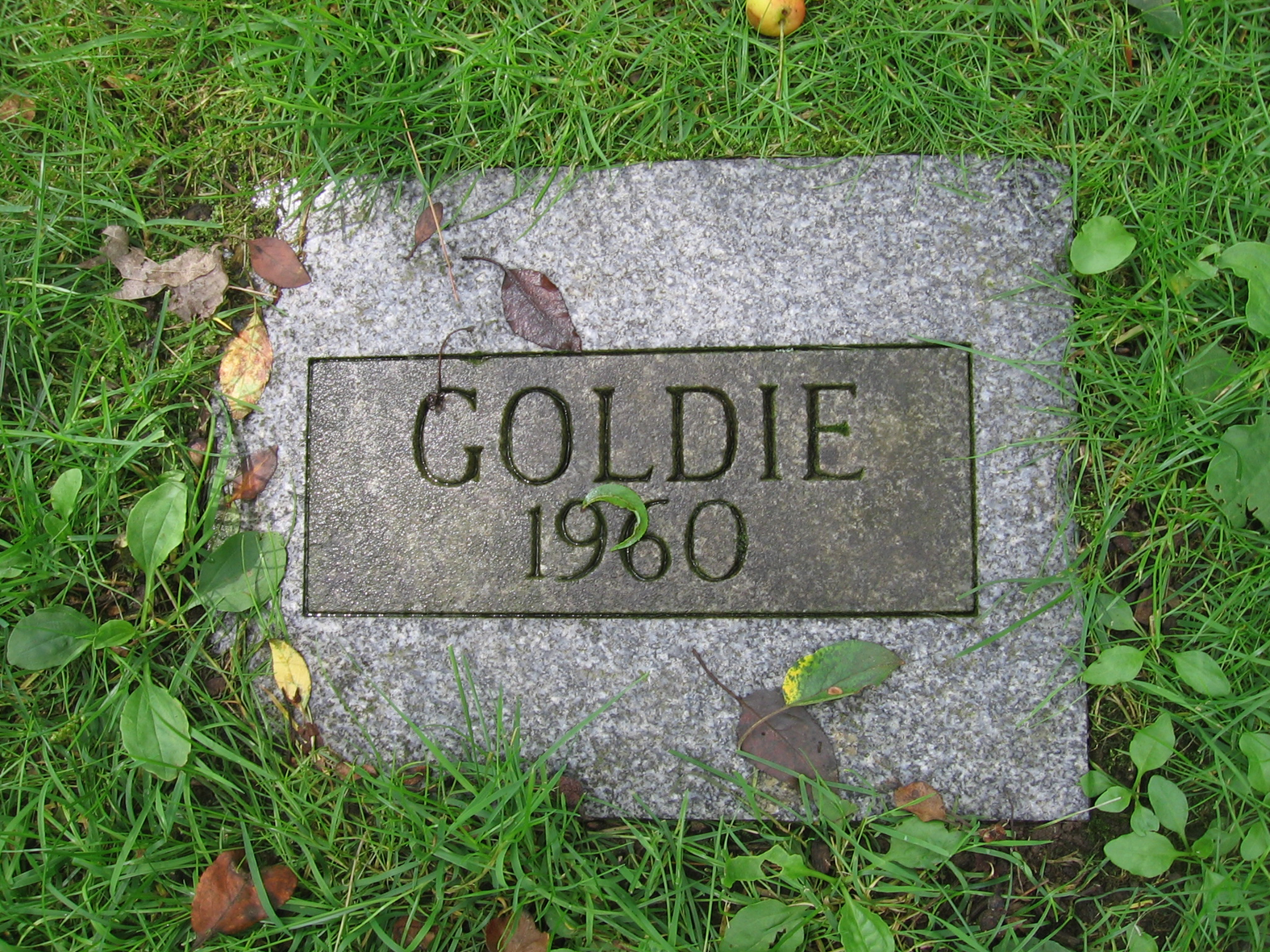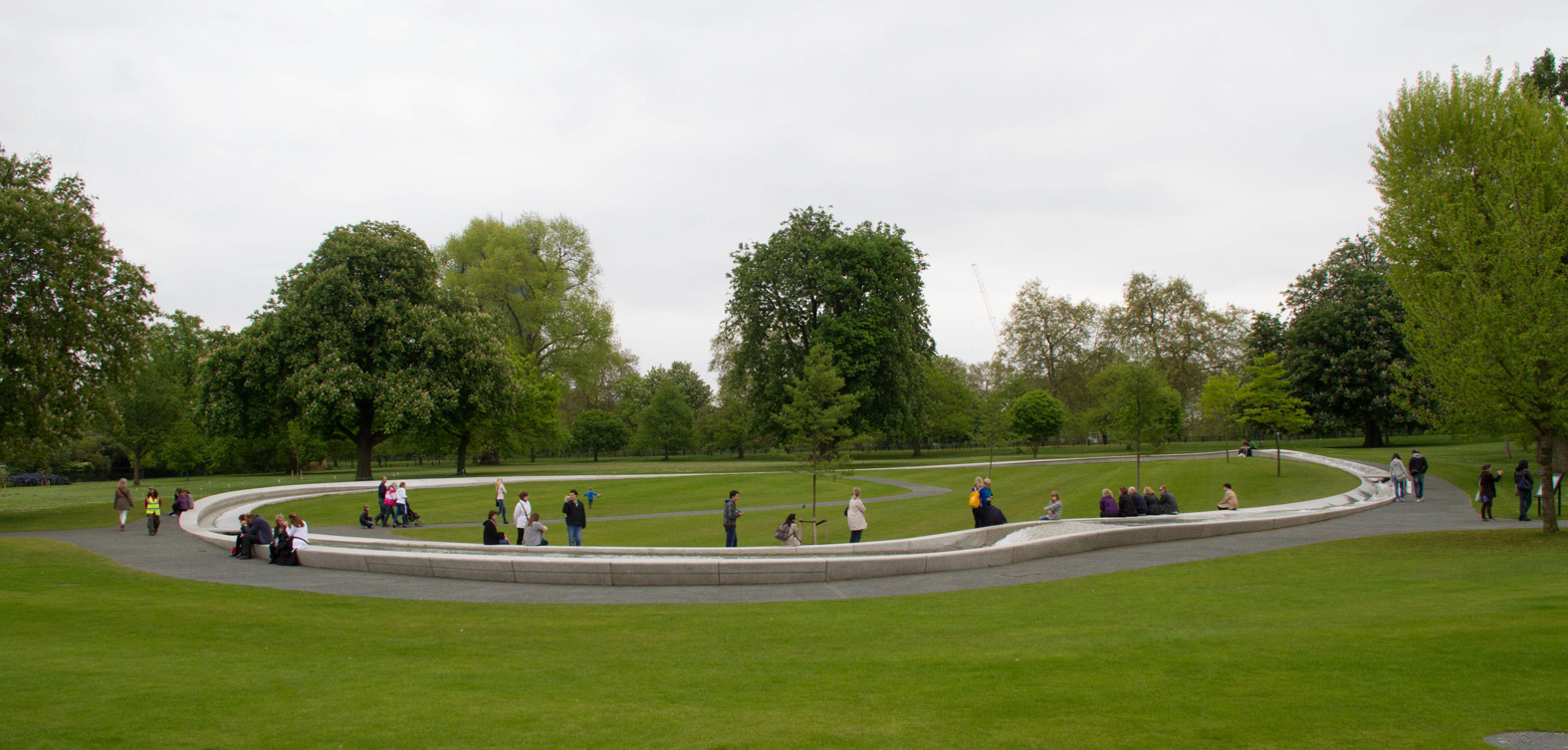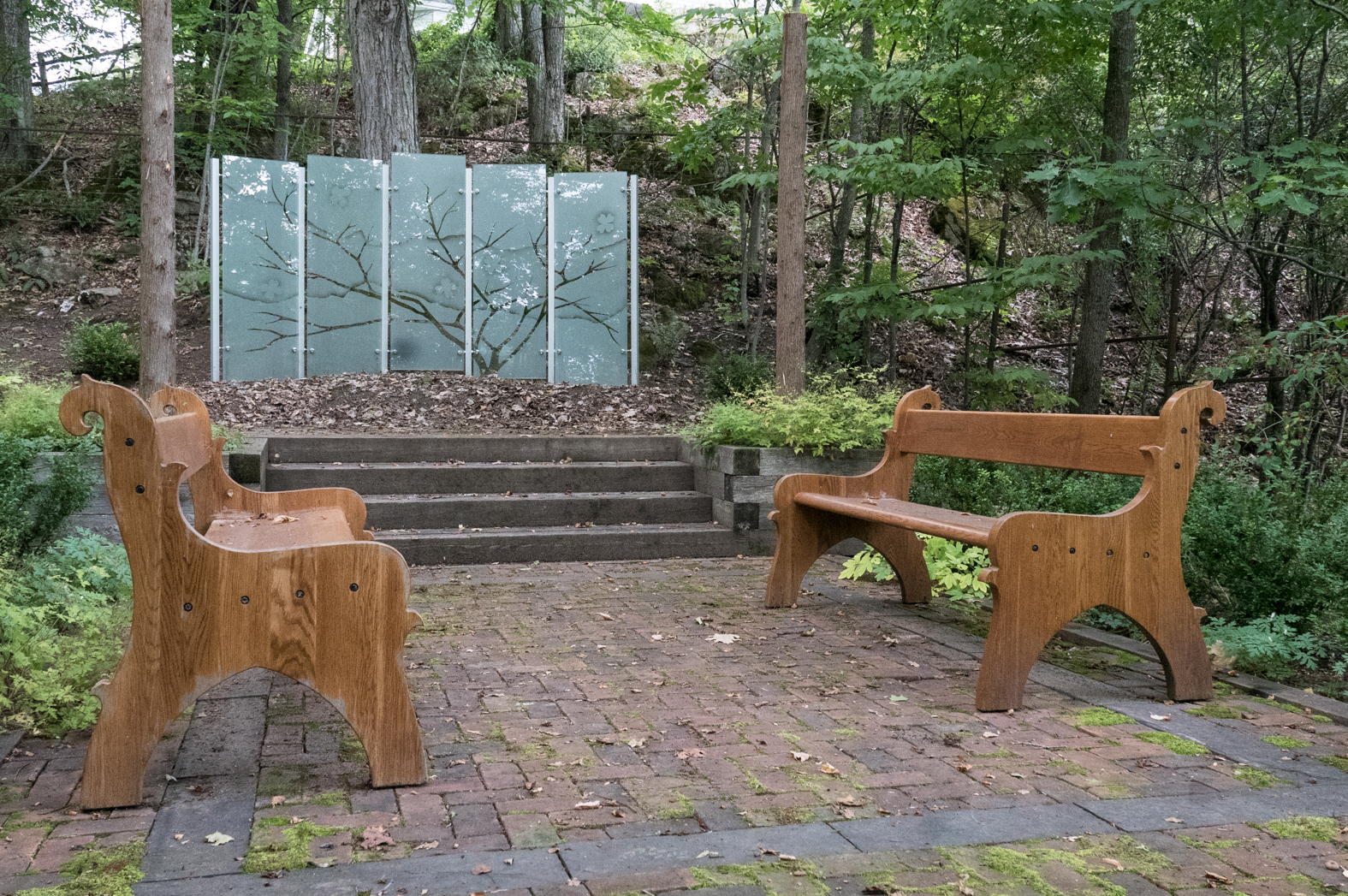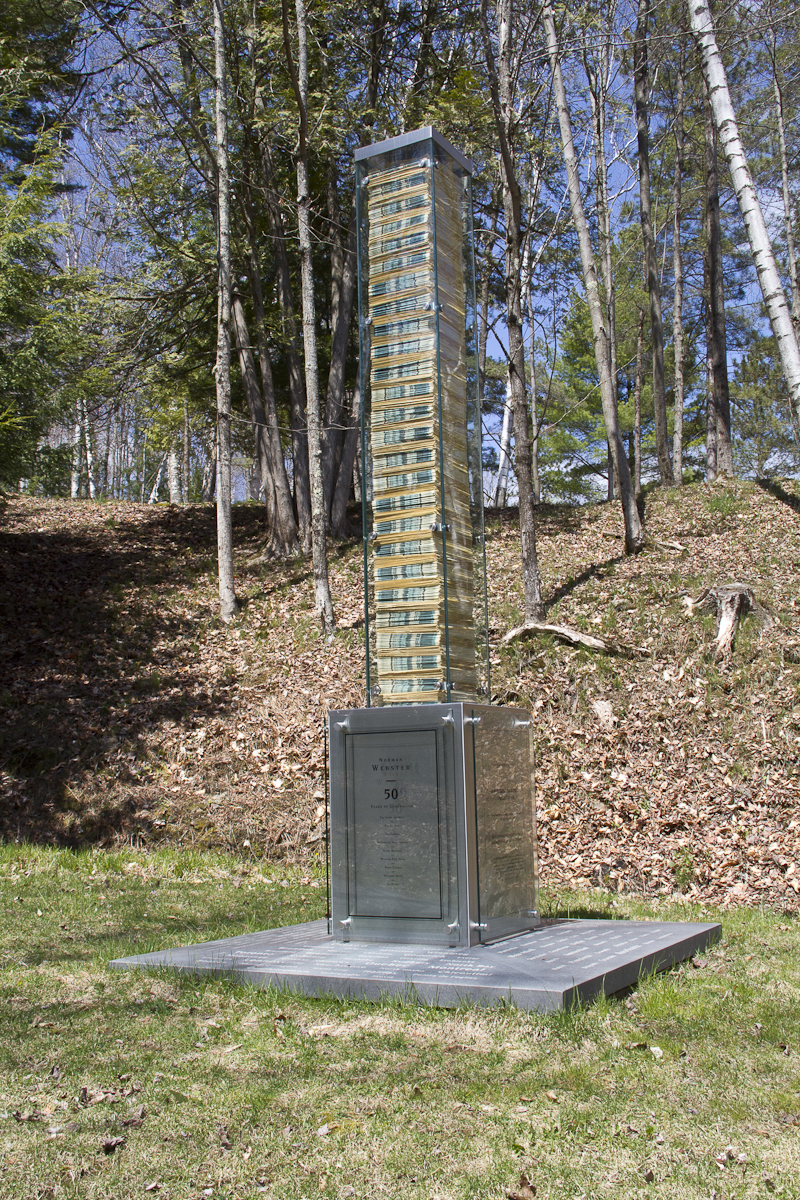Memorials are not typically found in private gardens. Occasionally you see a marker for a well-loved pet, like the one below that I came across at Glen Villa Art Garden, my garden in Quebec’s Eastern Townships. Stones like Goldie’s make a sorrowful statement about the past, but they also are aimed at the future, at preserving memories and transforming what used to be into a continuing part of the present.

Goldie was a dog. I’m guessing she was a Golden Retriever.
Memorials to individuals may be rare in private gardens but they are commonplace in the public sphere. Nowadays, however, the very existence of these public memorials raises questions. Who should be memorialized, and who makes the decision? Choices that once were self-evident aren’t so any longer, now that public perceptions about right and wrong, good and bad, have undergone, and continue to undergo, dramatic shifts.
Yet memorials to individuals continue to be erected. The design of some of recent vintage, like the monument to Martin Luther King, is clearly linked to the traditional ‘statue of the man’ approach.

Considering the choice of material, the quotation is apt.
The design of others, like the Princess Diana Fountain in Hyde Park, eschews the idea of representation in favour of abstraction.

Instead of representing her, the fountain draws on Diana’s love of children, offering them a place to play.
This minimalist approach is used much more frequently now for marking public grief, tribute and remembrance than the statues and obelisks of old. Think of Maya Lin’s Vietnam War Memorial, or the Holocaust Memorial in Berlin, or the 9-11 memorial in New York. This minimalist approach often uses quotations to highlight an individual’s ideas and ideals. As do many more traditional memorials. Quotations from Thomas Jefferson at his memorial in Washington play an important role in cementing the reputation of the man. Meant to be uplifting, they are as contradictory as the man himself, a slave owner who could write that “all men are created equal…” while trembling for his country because God’s “justice cannot sleep forever.”

This is a stock photo of the Jefferson Memorial — I don’t have one of my own.
Memorials that mark school shootings and mass deaths appear with tragic regularity. So do those celebrating military victories — although like memorials to individuals, these monuments arouse mixed responses these days.

The statue of Samuel de Champlain in Quebec City memorializes an individual and, by extension, the arrival and dominance of Europeans in what used to be New France.
Occasionally, decision makers will deem a positive event worthy of remembering. Melvin Charney’s tribute to Human Rights and Barbara Paterson’s memorial to women’s suffrage, both located in Ottawa, are two that come to mind.
In a private setting, the choice about what to memorialize and how to do it becomes personal. At Glen Villa, I used painted posts to remember my father, a brother-in-law and a sister-in-law.

These two posts, in memory of my father and a brother-in-law, are cut from a single pine tree, a gesture that represents the closeness of their relationship. A third post in memory of a sister-in-law stands nearby.
I created a space on a wooded hillside as a memorial to my mother.

The screen at Upper Room was designed by Montreal artist Mary Martha Guy. It shows branches and flowers of a dogwood tree, the Virginia state flower.
Webster’s Column represents a different kind of memorial, one that honours my husband’s career as a journalist. For many months I planned to add the dates 1959-2009 to the front panel to indicate the fifty years that he worked as a reporter, columnist, commentator and editor. Sometime over the coming months I will finally do that.

But can I do more?
The question I’m asking myself now is, can I find a way for the land itself to celebrate a single life, to show grief, to pay tribute and to remember? I haven’t seen Maya Lin’s Wave Field at Storm King, the outdoor sculpture park in New York, but the idea behind it appeals to me. I imagine walking over a gently undulating field and the pleasure that gives me: then I imagine those undulations enlarged and exaggerated, more powerfully expressing the ups and downs of a life lived together, hikes that took us to wide open views from the mountain crests and to tense, constricted gloom in the depressing moments that every marriage must have.
There is an abstract quality to Lin’s landscape that allows each of us to see what we want to see, to project our own thoughts and experiences. Yet an individual is not an abstraction. So perhaps the view onto the linden tree at the end of the Big Meadow will suffice as memorial. It is a cliché but it brings comfort, nonetheless, to know that a tree which is leafless now will be green again in the spring. And it won’t be just any green but that wonderful spring green that promises renewal and continuing life. That may need to be enough.







You’ve started me thinking hard. I think this may be one of those things which time suddenly resolves, with a dream, or some sudden idea which then seems obvious. The contemplation and musing must be an important part of the whole process, I suspect.
Thinking of you…… Xxxxx
My heartfelt condolences Pat.
Thank you, Paula.
Thought I had answered this… Yes, contemplation is part of the creative process. I don’t know what I will do, if anything. Hard to know without a lot more time passing.
A remarkable article, Pat. I look forward to learning whether you finally decide to do anything more than the linden tree as a living memorial. All your ideas are intriguing.
Thank you, Roberta. Living memorials seem so much more appropriate. But time will tell.
There is a wonderful video about Judy Dench, her garden and love of trees on BBC. She plants a single tree, carefully chosen to represent the person she loves and plants it with a simple name marker to commemorate a person she loved.
That’s a good idea, Helene. We’ve planted grandchildren trees so why not a tree in remembrance. I like the thought.
A long view (to the linden) enables long thoughts. I agree with Anne: it will come to you after “contemplation and musing” which are necessary to the process. There is no hurry. My deepest sympathy.
Thank you, Kathy. It’s a long process, with lots of tears, accompanied thank goodness, by lots of laughs and good memories.
What a touching piece. The memorials you chose for each family member were amazing. Even though I’ve never met them, I felt a real connection to who they were and what they loved. You’ve given me much to think about. Thank you for posting this.
Thank you, Kim. I appreciate your response, and even more, I appreciate that you took the time to read the piece. This is such a busy time of year!